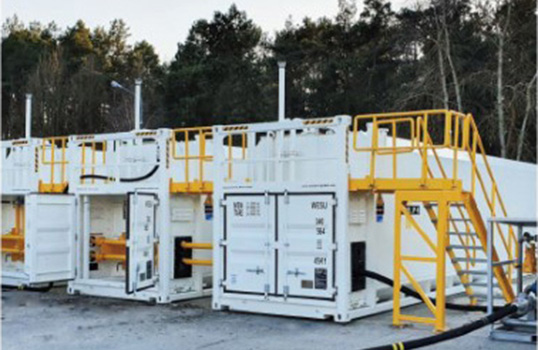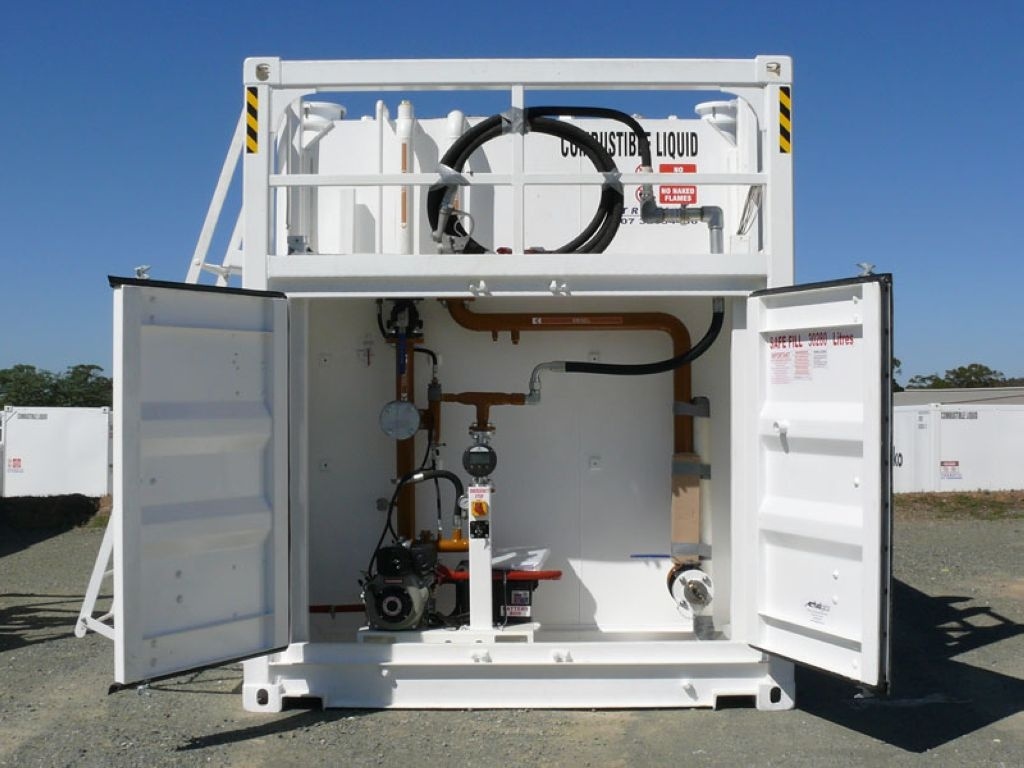Tank containers, commonly known as ISO tank containers, are specialized vessels designed for the safe and efficient transportation of liquids. These containers are crucial in global logistics, offering a versatile solution for the transportation of various liquid substances over long distances, particularly by sea, road, and rail. They are especially popular in industries such as chemicals, food and beverages, and oil and gas, where the safe and efficient delivery of liquids is essential.
But what types of liquids can be transported in them? While the answer depends on the type of tank and its specific design, there is a wide range of liquids that can be safely moved in these vessels. Let’s explore some of the primary categories of liquids typically transported in these units, as well as the key considerations for selecting the right one for each type of liquid.
1. Chemical Liquids
One of the most common uses for tank containers is the transportation of various chemical liquids. These can range from industrial chemicals to specialty products used in pharmaceuticals, agriculture, and other fields. The design makes them particularly suited for these types of liquids, as they are equipped with advanced safety features to prevent leaks, contamination, and temperature fluctuations.
Types of Chemical Liquids:
- Acids and Alkalis: These aggressive substances, including sulfuric acid, hydrochloric acid, and caustic soda, require specialized tank containers made from corrosion-resistant materials like stainless steel.
- Solvents: Common solvents like acetone, ethanol, and methanol are often transported in such containers. These substances are flammable and sometimes volatile, so the vessels used for their transportation must meet stringent safety standards.
- Other Industrial Chemicals: They are also used for transporting industrial chemicals such as hydrogen peroxide, liquid ammonia, and various petrochemical products, each requiring specific temperature control or inert conditions.
Safety is a paramount concern when transporting chemical liquids in tank containers. For this reason, these containers often include features like venting systems, pressure relief valves, and insulation to ensure that hazardous chemicals do not spill, leak, or react with the environment.

2. Food and Beverage Liquids
Food and beverage industries rely on tank containers for the safe transportation of a wide array of liquids. These containers are subject to strict regulations to ensure the safety and quality of the transported products. Typically made of high-quality stainless steel, they must be cleaned and sanitized between shipments to prevent contamination.
Types of Food and Beverage Liquids:
- Fruit Juices: Fresh juices such as orange, apple, and grapefruit juice are often transported in tank containers, particularly for international shipments. These containers help preserve the freshness of the product while maintaining the correct temperature.
- Dairy Products: Liquids like milk, cream, and liquid yogurt are moved in food-grade tanks designed to ensure hygiene and temperature control.
- Alcoholic Beverages: Liquor, wine, and beer, especially in bulk, are also moved using it. The tanks are typically fitted with temperature control systems to preserve the integrity of these products.
- Edible Oils: Liquid oils, such as vegetable oil, olive oil, and palm oil, are carried in specialized tanks designed to maintain the proper conditions and prevent oxidation and degradation.
Given the sensitivity of food and beverage liquids to temperature and hygiene, many tank containers used in these sectors are equipped with advanced refrigeration systems or heating capabilities to ensure the liquids remain in ideal conditions during transit.
3. Petroleum and Gas Liquids
The oil and gas industry makes extensive use of containers for transporting petroleum products and liquefied gases. They are ideal for these liquids because of their ability to safely handle volatile substances and withstand the extreme conditions often associated with oil and gas transport.
Types of Petroleum and Gas Liquids:
- Crude Oil and Refined Petroleum: Crude oil, gasoline, diesel, kerosene, and other refined petroleum products are transported in tank containers specifically designed for these high-risk liquids. These containers are equipped with double-walled construction to ensure maximum safety and minimize the risk of spills.
- Liquefied Natural Gas (LNG): They are also used for transporting liquefied natural gas, which requires specially designed tanks capable of withstanding extreme temperatures and pressures. Insulated and cryogenic they are used to transport LNG, keeping it in its liquid state during transit.
- Liquefied Petroleum Gas (LPG): Similarly, LPG, such as propane and butane, is transported in pressurized containers. These include safety valves and other features to handle the high pressures associated with LPG.
Transportation of petroleum and gas liquids in tank containers requires careful management of temperature, pressure, and potential hazards.
The containers used for these substances are built to handle flammable and potentially explosive liquids safely, ensuring the protection of people, goods, and the environment.

4. Pharmaceutical Liquids
The pharmaceutical industry requires highly controlled environments for the transportation of liquid medicines, vaccines, and other sensitive liquids. They used for pharmaceutical liquids must comply with rigorous regulatory standards to ensure that the products maintain their integrity throughout the transportation process.
Types of Pharmaceutical Liquids:
- Vaccines and Biologics:
Many vaccines and biologic substances must be transported at specific temperatures to preserve their effectiveness. Containers used for these liquids are often equipped with sophisticated refrigeration systems.
- Injectables and Liquid Medications: Many injectable drugs and intravenous solutions are transported in tank containers that ensure sterility and prevent contamination. These containers are usually designed with strict hygiene protocols to guarantee the safety of the liquids.
In addition to temperature control, these containers often require constant monitoring and detailed documentation to ensure compliance with industry regulations, such as the Good Distribution Practice (GDP) guidelines.
5. Other Liquid Products
They are also used to transport a variety of other liquids across different industries. These include:
- Water and Wastewater: In industrial operations, large volumes of water or wastewater need to be transported, often to or from treatment plants. They used for this purpose are typically less complex than those used for hazardous liquids but must still meet safety and capacity requirements.
- Liquid Fertilizers: They are frequently used in the agriculture industry to transport liquid fertilizers and other agricultural chemicals. These substances must be kept in proper conditions to maintain their effectiveness and prevent contamination.
- Paints and Coatings: Liquid paints, coatings, and other similar materials are transported in tank containers. Since these products can be highly flammable, the containers are equipped with necessary safety features to avoid accidents.
結論
Tank containers provide an invaluable service across a wide range of industries, offering a safe, efficient, and reliable means of transporting various types of liquid substances. From chemicals to food products, petroleum to pharmaceuticals, they are versatile enough to meet the needs of different sectors while ensuring that liquids remain in optimal conditions throughout their journey.
When choosing the appropriate container for any given liquid, it’s essential to consider factors such as the chemical properties of the liquid, required temperature conditions, potential for contamination, and safety risks. Advances in container technology continue to make these solutions safer and more efficient, meeting the increasing demands of global trade.
In sum, the types of liquids that can be transported in tank containers are diverse, and each category has its specific needs and requirements. They provide a key logistical solution in the modern economy, offering flexibility and security for the transportation of liquids worldwide.
CIMC TLC|XLC|RYC is a leading manufacturer of tank container and various other standard and special logistics equipment. With years of experience in the industry, it focuses on the design, production and distribution of high-quality innovative products that meet the specific needs of customers.
冷蔵コンテナ、コールドチェーン設備、コンテナ型設備統合、モジュール式建物など、高品質で革新的な物流設備が必要な場合、 CIMC TLC|XLC|RYC はあなたの最良の選択です。世界中のお客様からのお問い合わせを歓迎し、あなたと協力する機会を楽しみにしています。


